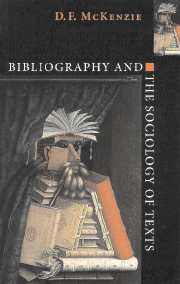2 - The broken phial: non-book texts
Published online by Cambridge University Press: 22 September 2009
Summary
The allusion in the phrase ‘The broken phial’ is of course to the famous passage in Milton's Areopagitica, where he speaks of books as having ‘a potencie of life’, for ‘they preserve as in a violl the purest efficacie and extraction of that living intellect which bred them … a good book is the pretious life-blood of a master-spirit, imbalm'd and treasur'd up on purpose to a life beyond life’.
Milton's use of the word ‘violl’ is interesting, since, in the Greek, it usually meant a broad, flat vessel, like a saucer; and in the Authorized Version it is still translated as a ‘bowl’. The sense of its being a small glass bottle, containing an essence, seems to have developed in the seventeenth century. I have not pursued the inquiry further but I imagine that this meaning relates to the use of glass tubes and phials in scientific experiments. Their transparency would have been important for allowing one to read the level of a liquid, as we do in a thermometer or mercury-glass, or to see chemical reactions involving, for example, changes of colour.
In this rather new sense, then, as used by Milton and later by Robert Boyle, it heightens the idea of enclosure, of the text as contained, determined, stable, of the author within, both clearly visible and enduringly present. When we note Milton's spelling of the word, we see that it may also bear another meaning which we lose if we modernize it.
- Type
- Chapter
- Information
- Bibliography and the Sociology of Texts , pp. 31 - 54Publisher: Cambridge University PressPrint publication year: 1999



